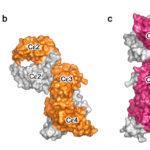 IUIS-FAIS-SAI-AAA Immuno-Algeria course took place remotely between 11th May -12th June. The theme of this meeting was “Challenge of Allergy in the Molecular Era”. This week we highlight a talk by Professor Ulrich Blank(INSERM, Paris, France) entitled “IgE and its affinity IgE receptor as a pharmacological target”.
IUIS-FAIS-SAI-AAA Immuno-Algeria course took place remotely between 11th May -12th June. The theme of this meeting was “Challenge of Allergy in the Molecular Era”. This week we highlight a talk by Professor Ulrich Blank(INSERM, Paris, France) entitled “IgE and its affinity IgE receptor as a pharmacological target”.
This summary highlights a talk by Professor Ulrich Blank (INSERM, Paris, France) entitled “IgE and its affinity IgE receptor as a pharmacological target”. In the first part of his presentation, Professor Ulrich gave a general overview of IgE and its high-affinity receptor in the context of type I hypersensitivity reactions. He then described the different therapeutic strategies developed (or under development) that target IgE and its receptor interactions to treat hypersensitivity. He explained that the simplest and most direct therapeutic strategy was to block the binding of the IgE with its receptor. For that purpose, a humanized monoclonal antibody (mAb) was developed by Novartis in 2003 “Omalizumab”, that targets IgE (anti-IgE antibody) and was designed to inhibit the interaction between IgE and its receptor. Currently, Omalizumab is only used to treat severe cases of allergies. The expensive cost and the very strict protocol for patients’ selection are some of the major limiting factors that prevent its widespread use. Follow up products of Omalizumab are currently under development by Novartis, one of which is Ligulizumab (QGE031) with an 80 fold higher affinity than Omalizumab.
An alternative to humanized antibodies is vaccination; this strategy is based on the immunization of patients with parts of the IgE antibody that binds to the specific receptor (Cε3). This vaccination strategy aims to induce a humoral immune response (anti-IgE antibodies). Pre-clinical vaccines studies on monkeys have been conducted, and results seem interesting so far, with IgE levels in monkeys serum dropping by 50% after injection with IgE-Ce3 peptides. The current challenge with anti-allergenic vaccination is inducing a robust and durable immune response specific for self-antigens.
Another alternative strategy and potentially much cheaper would be the design of small molecular weight chemical inhibitors of the IgE allergic response. There are different therapeutic strategies possible such as inhibitors that target either the free serum IgE or the bind IgE on the cell surface. Genentech in particular is working on this approach.
Last but not least, another alternative would be inhibitors that interact with cell signalling of the high affinity IgE cell receptor that leads to the effector cell degranulation. Potential problems may be the specificity the IgE receptor shares with many signalling enzymes and other cell receptors. Another challenge is that chronic allergic inflammation involves activation of many other cells and receptors. This implies that this therapeutic strategy may be very feasible, only if we can achieve a high specificity of action with the minimal secondary effects possible.
Lecture recording is available.
Summary by Mezghiche Ikram
